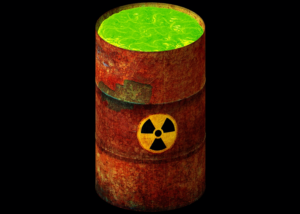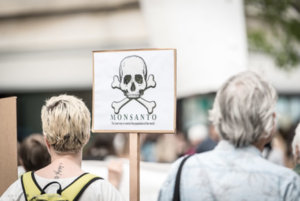I still sometimes think of toxic chemicals in terms of the neon green radioactive goo of The Simpsons. It’s easy to forget that our exposure to toxics is much more insidious and commonplace. It’s in the air we breathe, water we drink, food we eat, and things we buy. The ubiquity of toxic exposure means it’s also easy to forget or, at the very least, put some cognitive distance between the large range of negative health impacts, including cancer, decreased fertility, and neurological and developmental impacts.

Baskut Tuncak, the Special Rapporteur on human rights and toxics, made a strong statement about States’ duties to protect against toxic exposure when he presented his report to the 74th session of the UN General Assembly on human rights and toxic exposure on October 24, 2019 (which you can watch here). Clearly, negative health impacts of exposure to toxics puts at risk our right to the highest attainable standard of health and threatens all our rights that depend on this being met. For example, our right to life is threatened through toxic exposure, which was the single largest cause of premature death in the world. In a landmark case this year, the UN Human Rights Committee found that Paraguay had violated both the right to life and the right to life with dignity by not preventing toxic exposure of its citizens.
So, why are we permitting the increasing toxification of our planet and the systematic violation of the rights of the people living on it? As Tuncak asks, why are we allowing millions to be “poisoned without their knowledge or consent?”
A big part of the problem of toxic exposure is how it is regulated. The assumption of current toxic exposure regulation is that because industries would be liable if they caused any harm, they are supposedly incentivised to limit any risks from toxic exposure. This means regulation is dependent on big businesses self-regulating their own toxic output, which has proven to have, well, questionable efficacy. Carl Cranor, an Environmental Toxicology professor, says this system of regulation simply allows people to be “legally poisoned.”
There are two main reasons that this regulation system is inadequate. First, the impacts of exposure often only become evident over decades, and in tangent to other environmental factors. This makes it very difficult to prove the immediate and specific impacts of exposure that are required to prove legal liability. However, as Tuncak says “no evidence of risk does not mean no risk.” It took decades for the severe implications for lung health and cancer associated with asbestos exposure to become apparent, by which time thousands had already developed asbestos-related diseases, and it was widely used in homes, workplaces, and schools. The dependency of regulation on proving legal liability effectively means that regulation can only be put in place after the damage has already happened, severely limiting the capacity to preventatively regulate.
Waiting for the damages of toxic exposure to be conclusively proven before taking preventative measures to stop this damage seems counterintuitive at best and in direct opposition to the precautionary principle at worst. According to the precautionary principle, a lack of certainty should not stop prevention measures. A system that allows regulation to act against the precautionary principle seems particularly nonsensical, since the impacts of toxins on the environment and health are often irreversible and pervasive and have severe impacts on people’s access to rights.
A second problem with relying on self-regulation from industry is that companies tend to have a vested interest *cough* lots of money *cough* in sweeping any inconvenient risks from toxic exposure under the rug, and the means to make this happen. Big businesses have a pretty impressive track record of doing just this. If you do a quick internet search for the pesticide glyphosate (…I’ll wait), glyphosate seems, for the most part, harmless. However, US courts have consistently found companies that use it liable to their customers (read: victims) who were exposed to it. The lack of internet track record on this is no coincidence; companies that use glyphosate have unethically manipulated and suppressed findings that challenge its harmless image, including through sponsoring their own academic research, trying to influence the WHO to remove its label as a possible carcinogen, and ‘ghostwriting’ regulator risk assessments.
There is a long list of cases where companies negligently and maliciously suppressed the risks associated with exposure, sometimes poisoning whole towns in the process. DuPont’s poisoning of water in Parkersburg, West Virginia, with perfluorooctanoic acid (which is the basis for the upcoming film Dark Water starring Mark Ruffalo and Anne Hathaway) or Monsanto’s PCB pollution of Anniston, Alabama, are just two of many examples.

Regulating toxic exposure through a threat of legal liability is clearly ineffective. The crucial message of Tuncak’s report is that regardless of (the largely ineffective) liability mechanisms, countries already have positive human rights obligations to protect the rights threatened by toxic exposure. Positive obligations differ from negative obligations, for which countries just have to refrain from causing harm through toxic exposure themselves. Positive obligations mean that countries have to take proactive measures to create and enforce policies to regulate toxics. Tuncak emphasizes that they should do this in a way that doesn’t simply outsource toxic exposure and resultant rights violations transnationally.
If we continue a solely reactive approach to toxic exposure, we will be complicit in the escalating toxification of the planet and the systematic violation of the rights of the people on it. Tuncak and his report are clear: the only way to stop toxification of the environment is to prevent exposure in the first place.
By Hope de Rooy-Underhill, Geneva-based intern

Originally posted on November 12, 2019
